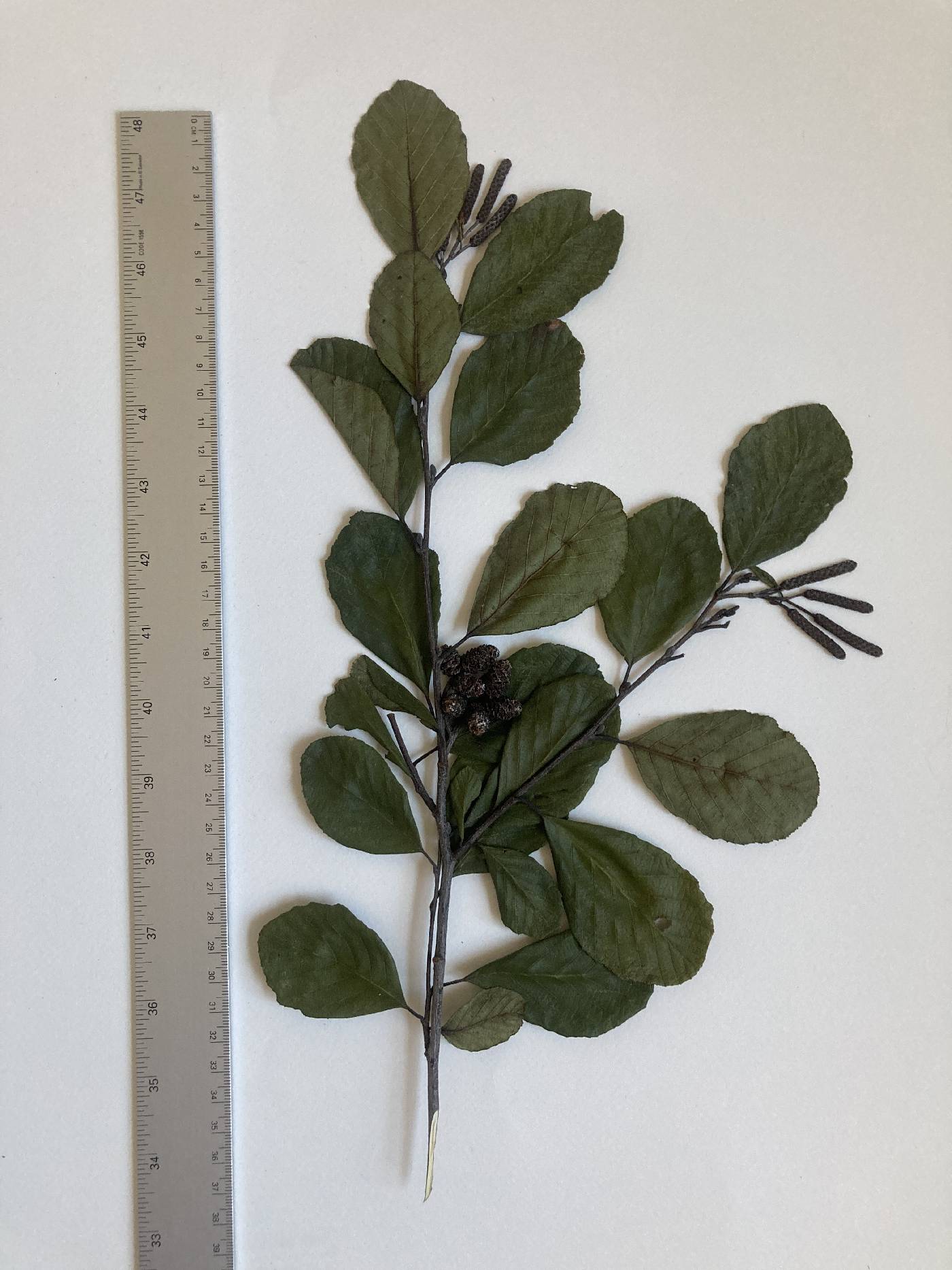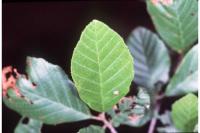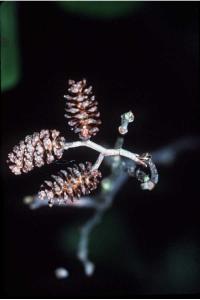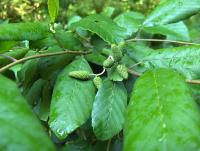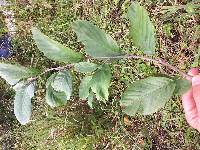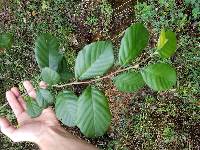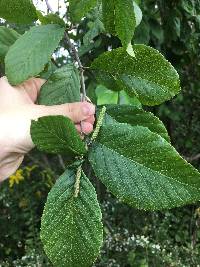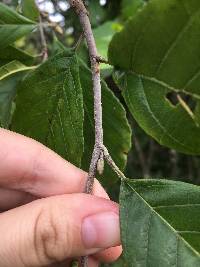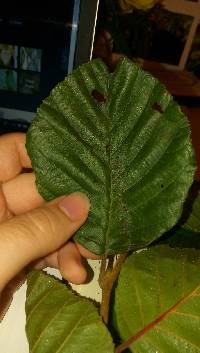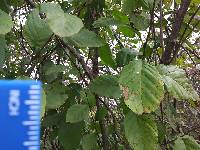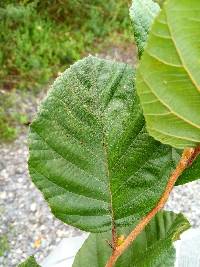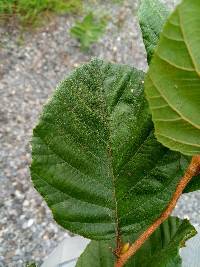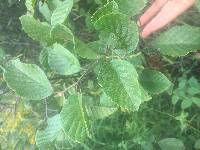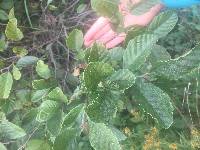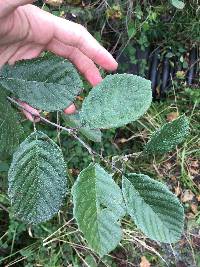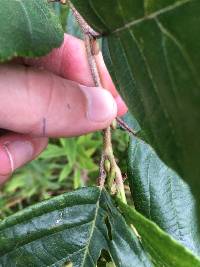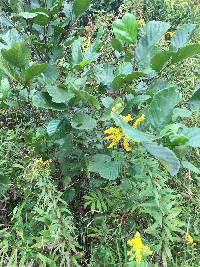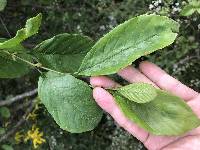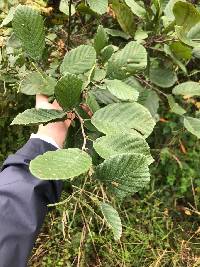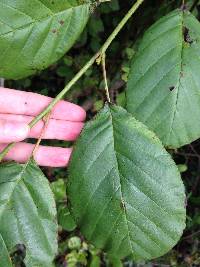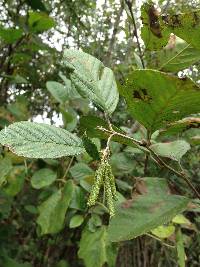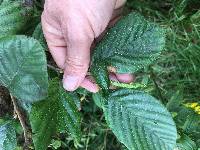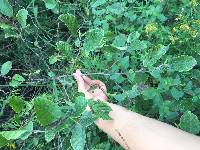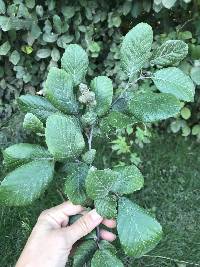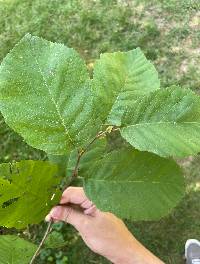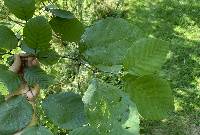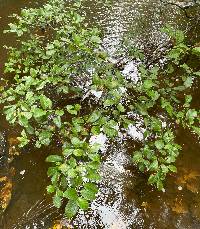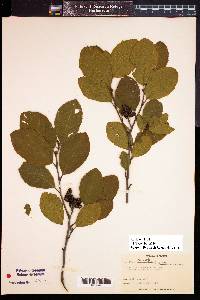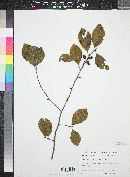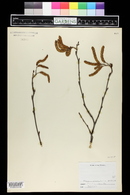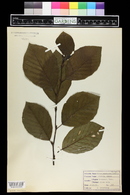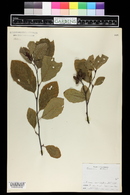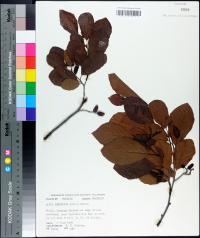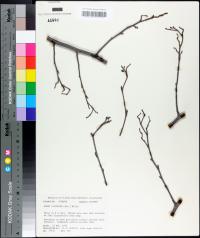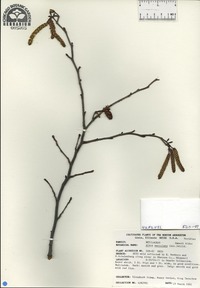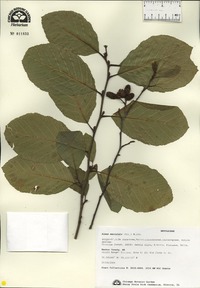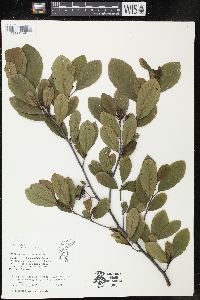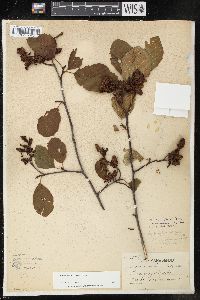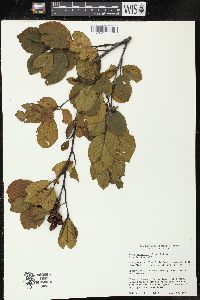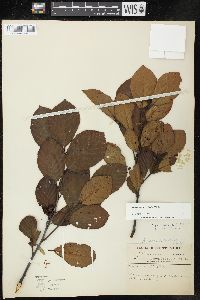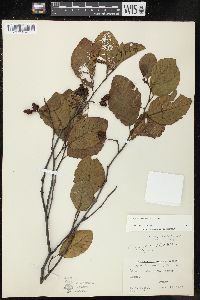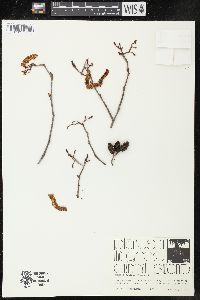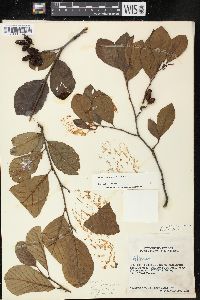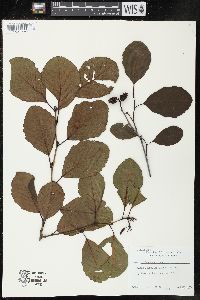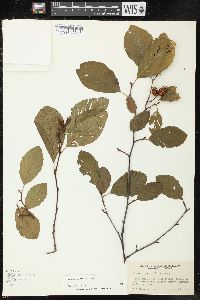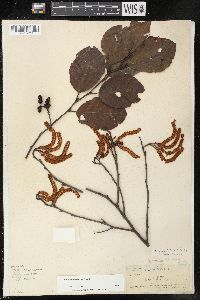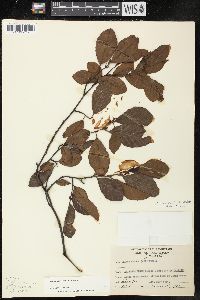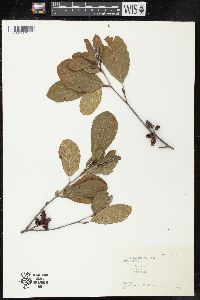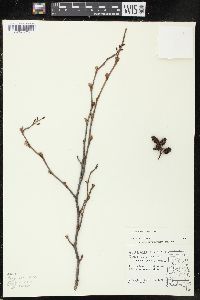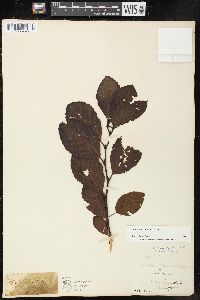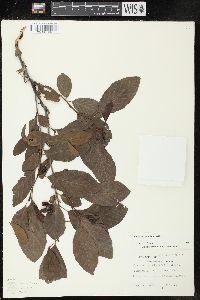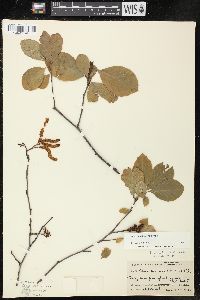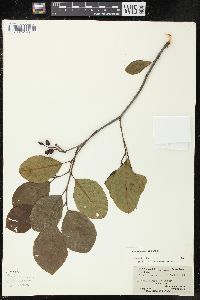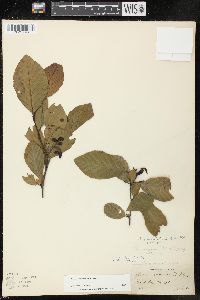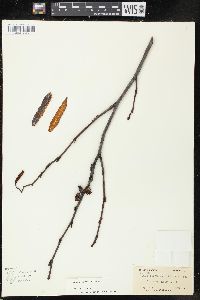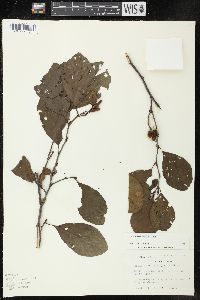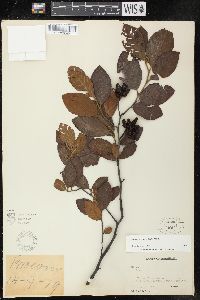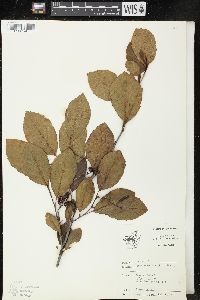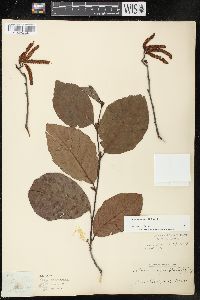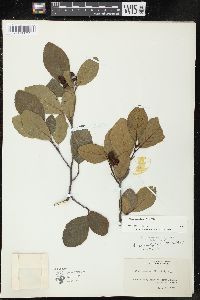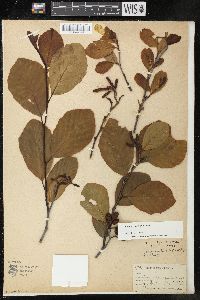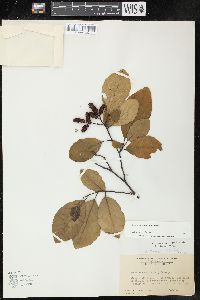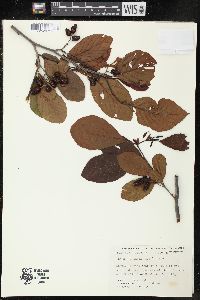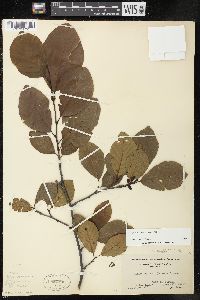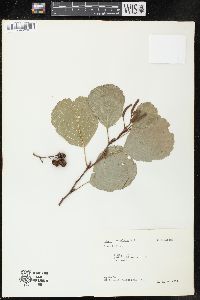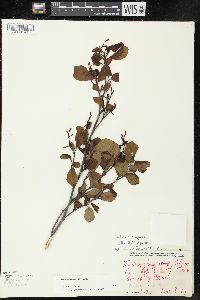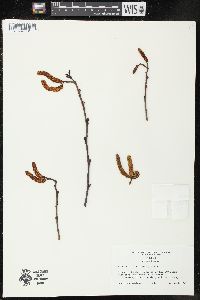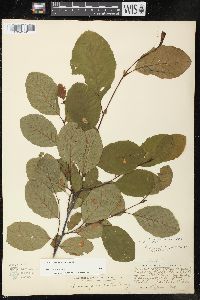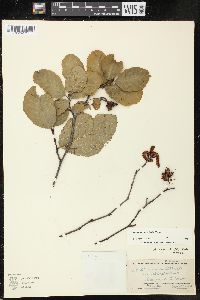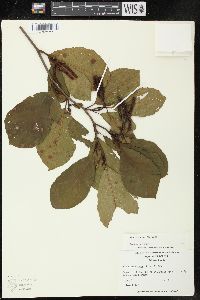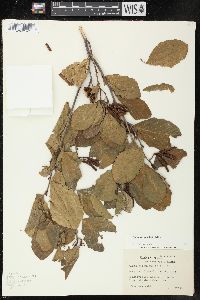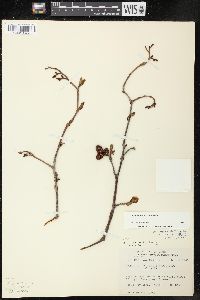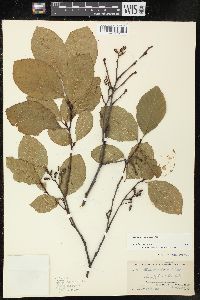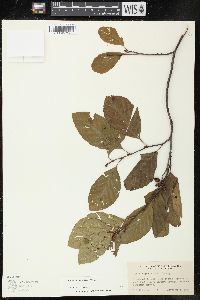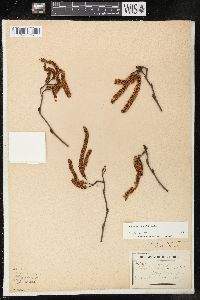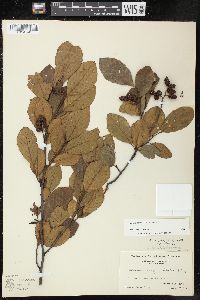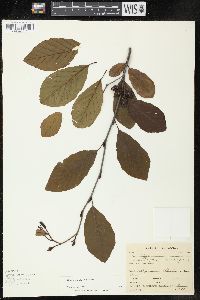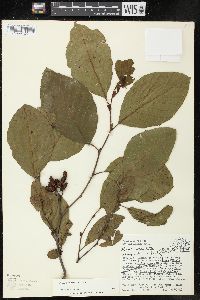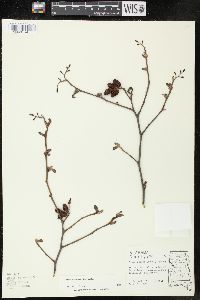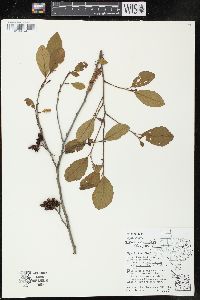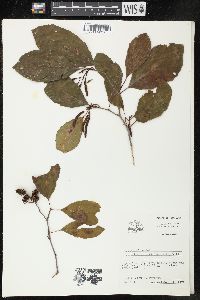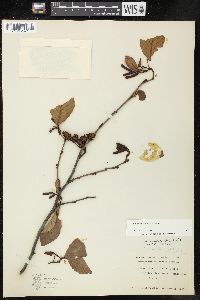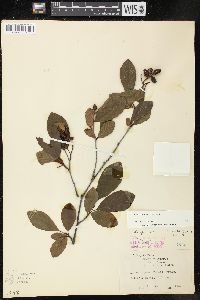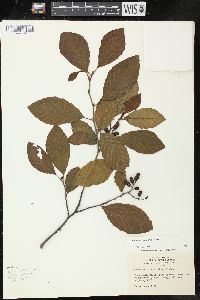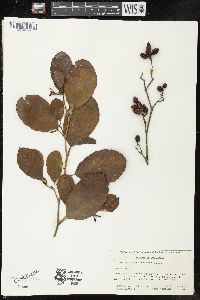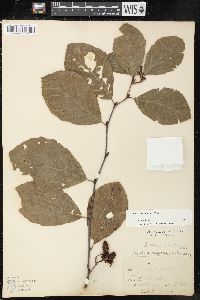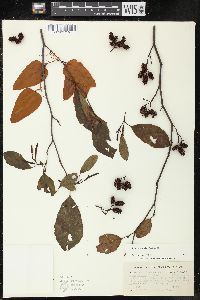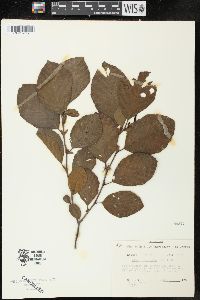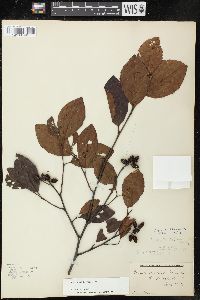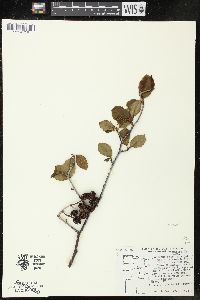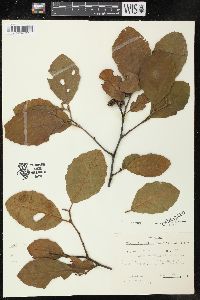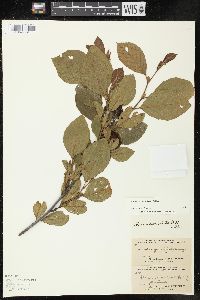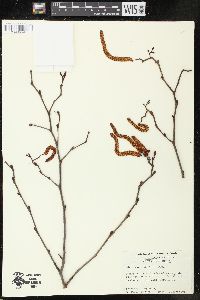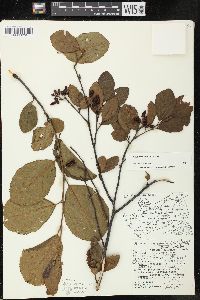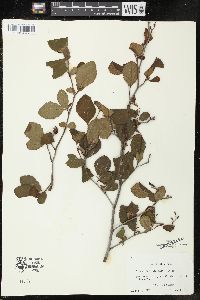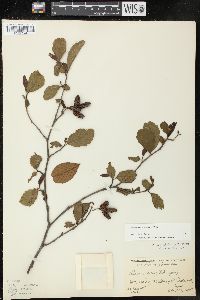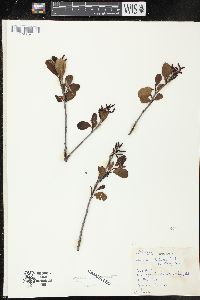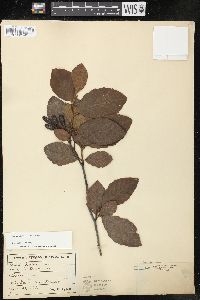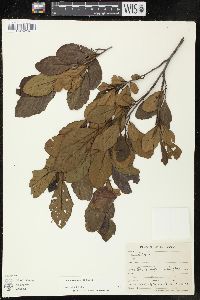Alnus serrulata
|
|
|
|
Family: Betulaceae
Brookside Alder, more...hazel alder
[Alnus autumnalis Hartig ex Garcke, moreAlnus serrulata f. emarginata Fernald, Alnus serrulata f. mollescens Fernald, Alnus serrulata f. nanella Fernald, Alnus serrulata var. vulgaris Spach] |
Shrubs , open to rather densely ascending, to 10 m. Bark light gray, smooth; lenticels small, inconspicuous. Winter buds stipitate, ellipsoid to obovoid, 3--6 mm, apex mostly rounded; stalks 2--4 mm; scales 2, equal, valvate, moderately to heavily resin-coated. Leaf blade broadly elliptic to obovate, 5--14 × 3.5--8 cm, leathery, base broadly to narrowly cuneate, margins flat, serrulate, without noticeably larger secondary teeth, apex obtuse to rounded; surfaces abaxially glabrous to moderately villous, slightly to moderately resin-coated. Inflorescences formed season before flowering and exposed during winter; staminate catkins in 1 or more clusters of 2--5, 3--8.5 cm, stamens 4; pistillate catkins in 1 or more clusters of 3--5. Flowering before new growth in spring. Infructescences ovoid-ellipsoid, 1--2.2 × 0.6--1.2 cm; peduncles 1--3(--5) mm. Samaras obovate, wings narrower than body, irregularly elliptic or obovate, leathery. 2 n = 28. Flowering early spring. Stream banks, ditches, edges of sloughs, swampy fields and bogs, and lakeshores; 0--800 m; N.S., Que.; Ala., Ark., Conn., Del., D.C., Fla., Ga., Ill., Ind., Ky., La., Maine, Md., Mass., Miss., Mo., N.H., N.J., N.Y., N.C., Ohio, Okla., Pa., R.I., S.C., Tenn., Tex., Vt., Va., W.Va. Primarily an Atlantic coastal species, Alnus serrulata also grows along the St. Lawrence river system and the lower Great Lakes westward to the dunes of southern Lake Michigan, and across the southern states to the Gulf Coast and east Texas. Alnus serrulata was erroneously called A . rugosa in a number of earlier floristic works (J. K. Small 1903, 1933; N. L. Britton and A. Brown 1896, 1913; and B. L. Robinson and M. L. Fernald 1908), and the mistake was perpetuated in both editions of Flora Europaea (T. G. Tutin et al. 1964--1980, vol. 1; 1993+, vol. 1). Alnus incana subsp. rugosa hybridizes with A . serrulata (= Alnus serrulata var. subelliptica Fernald). Extensive hybrid swarms occur where the ranges of these species overlap, including the area along the St. Lawrence River and the southern edge of the Great Lakes (F. L. Steele 1961). R. H. Woodworth's conclusion (1929, 1930) that apomixis occurs in A . serrulata resulted from his use of material selected from a hybrid swarm. The remainder of the species appears to reproduce normally. The two species and their hybrids are usually easily distinguished by leaf shape and margin characters. Various preparations of Alnus serrulata were used medicinally by Native Americans to alleviate pain of childbirth, as a blood tonic, an emetic and purgative, for coughs and fevers, to stimulate kidneys, to bathe hives or piles, for eye troubles, indigestion, biliousness, jaundice, heart trouble, mouth soreness in babies, and toothaches, to lower blood pressure, and to clear milky urine (D. E. Moerman 1986).
Shrub to small tree to 10 m tall Leaves: alternate, stalked, dull green above, light green beneath, 5 - 14 cm long, 3.5 - 8 cm wide, oval to inversely egg-shaped with a wedge-shaped base and a blunt to rounded tip, finely toothed, slightly sticky when young, smooth to hairy-veined beneath, with nine to twelve almost parallel veins on each side of the midvein. Flowers: either male or female, found on the same tree (monoecious), borne in catkins. Male catkins are in clusters of two to five and 3 - 8.5 cm long. Female catkins in clusters of three to five and green to purple. Fruit: winged (samara), borne in a woody, dark brown, egg-shaped to elliptical, cone-like cluster of scales (catkin) 1 - 2.2 cm long and 0.6 - 1.2 cm wide. Samaras are elliptic to inversely egg-shaped with narrow wings. Bark: light gray to reddish brown, smooth, with horizontal corky spots (lenticels) that eventually form a crack. Twigs: covered with reddish brown hairs when young, becoming smooth and reddish brown to brown. The center of the cut twig (pith) is triangular. Buds: stalked, 3 - 6 mm long, elliptic to inversely egg-shaped, sticky, with two scales that do not overlap (valvate). Form: open to densely upright. Similar species: Alnus glutinosa is always a tree and has leaves with rounded to indented tips. Both Alnus serrulata and Alnus incana ssp. rugosa may be trees or shrubs and have leaves with pointed tips. The leaves of A. incana ssp. rugosa are usually widest at or beneath the middle and are whitish beneath. Flowering: early spring Habitat and ecology: Swink and Wilhelm have not seen this species alive in the Chicago Region, but vouchers exist from collections between 1872 and 1935. It occasionally grows along rocky streams in southern Illinois. Elsewhere in the United States, it is found in damp and shady valleys of creeks and along the edges of swamps and sloughs. Occurence in the Chicago region: native Notes: Birds eat the seeds, buds, and catkins, and use the plants for shelter. The species is often planted to control soil erosion because it has dense roots. Nitrogen-fixing bacteria form nodules on the roots and convert atmospheric nitrogen into a form the plant can use. The cone-like catkins can be used to make jewelery and are plated in precious metals. Etymology: Alnus is the Latin name for an alder. Serrulata comes from the Latin words meaning small-toothed, referring to the margins of the leaves. Author: The Morton Arboretum Much like no. 2 [Alnus incana (L.) Moench]; lvs elliptic to obovate, tending to be broadest above the middle, obtuse to rounded, serrate with very fine, sharp, nearly regular teeth, obtuse to cuneate at base, beneath green and glabrous, or thinly pubescent on the veins; 2n=28. Wet soil; N.S. and s. Que. to n. Fla., w. to n. Ind., s. Ill., Mo., Okla., and w. Tex. Gleason, Henry A. & Cronquist, Arthur J. 1991. Manual of vascular plants of northeastern United States and adjacent Canada. lxxv + 910 pp. ©The New York Botanical Garden. All rights reserved. Used by permission. From Flora of Indiana (1940) by Charles C. Deam Locally in colonies but rare to infrequent in the parts of the state where it is found. It inhabits springy places in woodland or in the open. Its habitat and associates indicate that it requires a slightly acid soil. ...... Indiana Coefficient of Conservatism: C = 6 Wetland Indicator Status: OBL Diagnostic Traits: Shrubs; leaves obovate, margins finely serrate, apex obtuse to rounded; seeds produced in a cluster of woody, cone-like catkins. |
|
|
|

